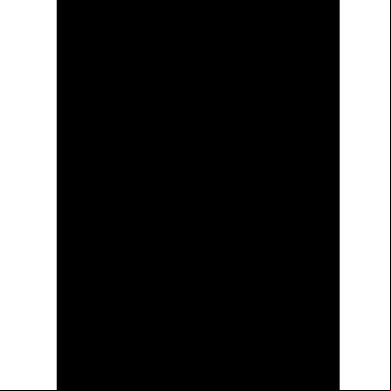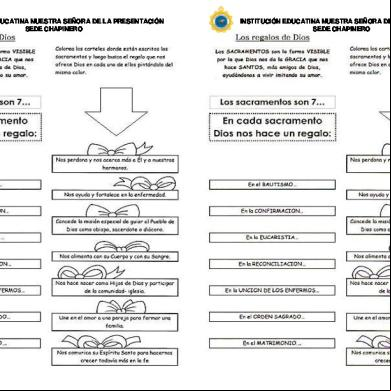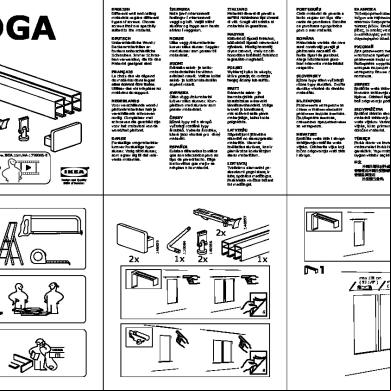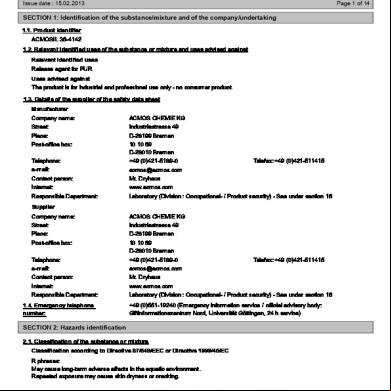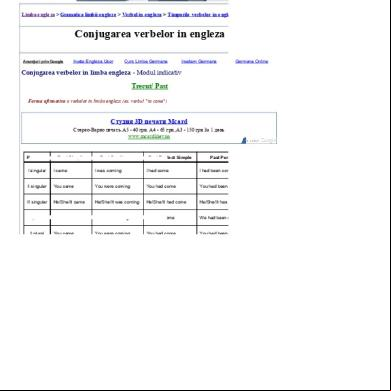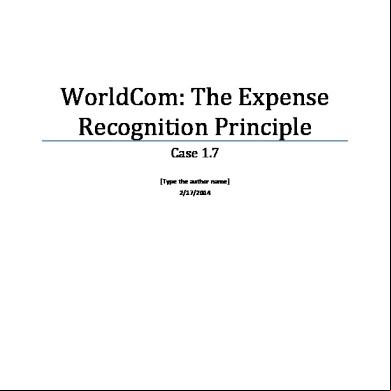Assignment Ch 2.docx 76i5d
This document was ed by and they confirmed that they have the permission to share it. If you are author or own the copyright of this book, please report to us by using this report form. Report 3i3n4
Overview 26281t
& View Assignment Ch 2.docx as PDF for free.
More details 6y5l6z
- Words: 2,646
- Pages: 30
1. Ch 02 Practice Test Question 01 In a job-order costing system, the basic document for accumulating costs for a specific job is: the job cost sheet. 2. Ch 02 Practice Test Question 02 Which of the following statements is FALSE? Process costing prepares a production report for each major product. 3. Ch 02 Practice Test Question 03 Which of the following statements is TRUE? Which of the following statements is TRUE? 4. Ch 02 Practice Test Question 06 Which of the following source documents is used to summarize all of the costs incurred for a specific job? Job cost sheet. 5. Ch 02 Practice Test Question 09 Unit product cost information is used for: valuing unsold units in ending inventory and for determining cost of goods sold. 6. Ch 02 Practice Test Question 11 Suppose $20,000 of raw materials is withdrawn from the storeroom to be used in production. Of this amount, $15,000 consists of direct materials and $5,000 consists of indirect materials. What or s will be debited? Work in Process $15,000 and Manufacturing Overhead $5,000. 7. Ch 02 Practice Test Question 12 The entry to record the application of manufacturing overhead to the jobs of the period will increase which balance? Work in Process Inventory 8. Ch 02 Practice Test Question 13 The entry to record cost of goods sold will decrease which of the following s? Finished Goods Inventory 9. Ch 02 Practice Test Question 14
The ending Finished Goods balance is determined by adding the beginning balance to the: cost of goods manufactured and then subtracting the cost of goods sold. 10.Exercise 2-1 Compute the Predetermined Overhead Rate [LO2-1] Harris Fabrics computes its predetermined overhead rate annually on the basis of direct labor-hours. At the beginning of the year, it estimated that 20,000 direct labor-hours would be required for the period’s estimated level of production. The company also estimated $94,000 of fixed manufacturing overhead expenses for the coming period and variable manufacturing overhead of $2.00 per direct labor-hour. Harris's actual manufacturing overhead for the year was $123,900 and its actual total direct labor was 21,000 hours.
Required: Compute the company's predetermined overhead rate for the year. (Round your answer to 2 decimal places.)
Y = a + bX Y = $94,000 + ( $2*20,000) = 134,000 134,000/20,000=6.70 per DLH
11.Exercise 2-2 Apply Overhead [LO2-2]
Luthan Company uses a predetermined overhead rate of $23.40 per direct labor-hour. This predetermined rate was based on a cost formula that estimated $257,400 of total manufacturing overhead for an estimated activity level of 11,000 direct labor-hours. The company incurred actual total manufacturing overhead costs of $249,000 and 10,800 total direct labor-hours during the period.
Required: Determine the amount of manufacturing overhead that would have been applied to all jobs during the period.
10,800*$23.40=252,720
12.Exercise 2-4 Prepare Journal Entries [LO2-4] Larned Corporation recorded the following transactions for the just completed month.
a.$80,000 in raw materials were purchased on . b. $71,000 in raw materials were requisitioned for use in production. Of this amount, $62,000 was for direct materials and the remainder was for indirect materials. c. Total labor wages of $112,000 were incurred. Of this amount, $101,000 was for direct labor and the remainder was for indirect labor. d.Additional manufacturing overhead costs of $175,000 were incurred. Required: Record the above transactions in journal entries. (If no entry is required for a transaction/event, select "No journal entry required" in the first field.)
b. 71,000 – 62,000= 9,000 c. 112,000 – 101,000 = 11,000
13.Exercise 2-5 Prepare T-s [LO2-5, LO2-7] Jurvin Enterprises recorded the following transactions for the just completed month. The company had no beginning inventories.
a.$94,000 in raw materials were purchased for cash. b. $89,000 in raw materials were requisitioned for use in production. Of this amount, $78,000 was for direct materials and the remainder was for indirect materials. c. Total labor wages of $132,000 were incurred and paid. Of this amount, $112,000 was for direct labor and the remainder was for indirect labor. Additional manufacturing overhead costs of $143,000 were incurred and paid.
d.
e. Manufacturing overhead costs of $152,000 were applied to jobs using the company’s predetermined overhead rate. All of the jobs in progress at the end of the month were completed and shipped to customers. Any underapplied or overapplied overhead for the period was closed out to g. Cost of Goods Sold. f.
Required: 1. Post the above transactions to T-s.
2. Determine the cost of goods sold for the period.
14.Exercise 2-9 Journal Entries and T-s [LO2-2, LO2-4, LO2-5]
The Polaris Company uses a job-order costing system. The following data relate to October, the first month of the company’s fiscal year.
a.Raw materials purchased on , $210,000. Raw materials issued to production, $190,000 ($178,000 direct materials b. and $12,000 indirect materials). c.Direct labor cost incurred, $90,000; indirect labor cost incurred, $110,000. d.Depreciation recorded on factory equipment, $40,000. Other manufacturing overhead costs incurred during October, $70,000 e. (credit s Payable). f. The company applies manufacturing overhead cost to production on the basis of $8 per machine-hour. A total of 30,000 machine-hours were recorded for October. g. Production orders costing $520,000 according to their job cost sheets were completed during October and transferred to Finished Goods. h. Production orders that had cost $480,000 to complete according to their job cost sheets were shipped to customers during the month. These goods were sold on at 25% above cost.
Required: 1. Prepare journal entries to record the information given above. (If no entry is required for a transaction/event, select "No journal entry required" in the first field.)
2. Prepare T-s for Manufacturing Overhead and Work in Process. Post the relevant information above to each . Compute the ending balance in each , assuming that Work in Process has a beginning balance of $42,000.
15.Exercise 2-11 Schedules of Cost of Goods Manufactured and Cost of Goods Sold; Income Statement [LO2-6] The following data from the just completed year are taken from the ing records of Mason Company:
1. Prepare a schedule of cost of goods manufactured. Assume all raw materials used in production were direct materials.
2. Prepare a schedule of cost of goods sold.
3. Prepare an income statement.
16.Exercise 2-14 Computing Predetermined Overhead Rates and Job Costs [LO21, LO2-2, LO2-3, LO2-7] Moody Corporation uses a job-order costing system with a plantwide overhead rate based on machine-hours. At the beginning of the year, the company made the following estimates:
Required: 1. Compute the predetermined overhead rate. (Round your answer to 2
decimal places.)
2. During the year, Job 400 was started and completed. The following information was available with respect to this job:
Compute the total manufacturing cost assigned to Job 400. (Round your intermediate calculations to 2 decimal places.)
3a. During the year, the company worked a total of 146,000 machine-hours on all jobs and incurred actual manufacturing overhead costs of $1,350,000. What is the amount of underapplied or overapplied overhead for the year? (Round your intermediate calculations to 2 decimal places.)
3b. If this amount were closed out entirely to Cost of Goods Sold, would net operating income increase or decrease?
Increase
17.Exercise 2-18 Applying Overhead; T-s; Journal Entries [ LO2-1, LO2-2, LO2-4, LO2-5, LO2-7] Harwood Company uses a job-order costing system. Overhead costs are applied to jobs on the basis of machine-hours. At the beginning of the year, management estimated that 80,000 machine-hours would be required for the period’s estimated level of production. The company also estimated $128,000 of fixed manufacturing overhead expenses for the coming period and variable manufacturing overhead of $0.80 per machine-hour.
Required: 1. Compute the company’s predetermined overhead rate. (Round your answer to 2 decimal places.)
2. Assume that during the year the company works only 75,000 machinehours and incurs the following costs in the manufacturing overhead and
work in process s. Compute the amount of overhead cost that would be applied to work in process for the year, and make the entry in your t-s given below: (Round your intermediate calculations to 2 decimal places.)
3a. Compute the amount of underapplied or overapplied overhead for the year. (Round your intermediate calculations to 2 decimal places.)
-b. Prepare a journal entry to close out the balance in the manufacturing overhead to cost of goods sold. (If no entry is required for a transaction/event, select "No journal entry required" in the first field. Round your intermediate calculations to 2 decimal places.)
18.Exercise 2-19 Applying Overhead in a Service Company [LO2-1, LO2-2, LO2-3] Leeds Architectural Consultants began operations on January 2. The following activity was recorded in the company’s Work in Process for the first month of operations:
Leeds Architectural Consultants is a service firm, so the names of the s it uses are different from the names used in manufacturing companies. Costs of Subcontracted Work is comparable to Direct Materials; Direct Staff Costs is the same as Direct Labor; Studio Overhead is the same as Manufacturing Overhead; and Completed Projects is the same as Finished Goods. Apart from the difference in , the ing methods used by the company are identical to the methods used by manufacturing companies.
Leeds Architectural Consultants uses a job-order costing system and applies studio overhead to Work in Process on the basis of direct staff costs. At the end of January, only one job was still in process. This job (Lexington Gardens Project) had been charged with $6,500 in direct staff costs.
Required:
1. Compute the predetermined overhead rate that was in use during January.
2. Complete the following job cost sheet for the partially completed Lexington Gardens Project.
Exercise 3-4 (30 minutes)
1. Since $120,000 of studio overhead was applied to Work in Process on the basis of $75,000 of direct staff costs, the apparent predetermined overhead rate is 160%: Studio overhead applied $120,000 = = 160% rate. Direct staff costs incurred $75,000 2. The Lexington Gardens Project is the only job remaining in Work in Process at the end of the month; therefore, the entire $35,000 balance in the Work in Process at that point must apply to it. Recognizing that the predetermined overhead rate is 160% of direct staff costs, the following computation can be made: Total cost in the Lexington Gardens Project..................................................... $35,000 Less Direct staff costs........................................ : $ 6,500 Studio overhead cost ($6,500 × 160%)...................................................... 10,400 16,900 Costs of subcontracted work...................... $18,100 With this information, we can now complete the job cost sheet for the Lexington Gardens Project: Costs of subcontracted work.. . $18,100 Direct staff costs..................... 6,500 Studio overhead...................... 10,400 Total cost to January 31........... $35,000
19.Problem 2-27A Comprehensive Problem [LO2-1, LO2-2, LO2-4, LO2-5, LO2-7] Gold Nest Company of Guandong, China, is a family-owned enterprise that makes birdcages for the South China market. The company sells its birdcages through an extensive network of street vendors who receive commissions on their sales. All of the company’s transactions with customers, employees, and suppliers are conducted in cash; there is no credit.
The company uses a job-order costing system in which overhead is applied to jobs on the basis of direct labor cost. Its predetermined overhead rate is based on a cost formula that estimated $330,000 of manufacturing overhead for an estimated activity level of $200,000 direct labor dollars. At the beginning of the year, the inventory balances were as follows:
During the year, the following transactions were completed:
a. Raw materials purchased for cash, $275,000. b. Raw materials requisitioned for use in production, $280,000 (materials costing $220,000 were charged directly to jobs; the remaining materials were indirect). c. Costs for employee services were incurred as follows:
d. Rent for the year was $18,000 ($13,000 of this amount related to factory operations, and the remainder related to selling and istrative activities). e.Utility costs incurred in the factory, $57,000. f. Advertising costs incurred, $140,000. g. Depreciation recorded on equipment, $100,000. ($88,000 of this amount was on equipment used in factory operations; the remaining $12,000 was on equipment used in selling and istrative activities.)
h. Manufacturing overhead cost was applied to jobs, $? Goods that had cost $675,000 to manufacture according to their job cost sheets were completed.
i. j.
Sales for the year totaled $1,250,000. The total cost to manufacture these goods according to their job cost sheets was $700,000.
Required: 1. Prepare journal entries to record the transactions for the year. (If no entry is required for a transaction/event, select "No journal entry required" in the first field. Round your intermediate calculations to 2 decimal places.)
2. Prepare T-s for inventories, Manufacturing Overhead, and Cost of Goods Sold. Post relevant data from your journal entries to these Ts (don’t forget to enter the beginning balances in your inventory s). (Round your intermediate calculations to 2 decimal places.)
3Is Manufacturing Overhead underapplied or overapplied for the year? a.
Overapplied
3b. Prepare a journal entry to close any balance in the Manufacturing Overhead to Cost of Goods Sold. (If no entry is required for a transaction/event, select "No journal entry required" in the first field. Round your intermediate calculations to 2 decimal places.)
4. Prepare an income statement for the year. (Round your intermediate calculations to 2 decimal places.)
20.
Exercise 2-1 Compute the Predetermined Overhead Rate [LO2-1]
Harris Fabrics computes its predetermined overhead rate annually on the basis of direct labor-hours. At the beginning of the year, it estimated that 36,000 direct labor-hours would be required for the period’s estimated level of production. The company also estimated $549,000 of fixed manufacturing overhead expenses for the coming period and variable manufacturing overhead of $3.00 per direct labor-hour. Harris's actual manufacturing overhead for the year was $730,000 and its actual total direct labor was 36,500 hours.
Required: Compute the company's predetermined overhead rate for the year. (Round your answer to 2 decimal places.)
549,000+($3.00*36,000)=657,000 657,000/36,000=18.25
21.
Exercise 2-2 Apply Overhead [LO2-2]
Luthan Company uses a predetermined overhead rate of $23.10 per direct labor-hour. This predetermined rate was based on a cost formula that estimated $277,200 of total manufacturing overhead for an estimated activity level of 12,000 direct labor-hours. The company incurred actual total manufacturing overhead costs of $268,000 and 11,000 total direct labor-hours during the period.
Required: Determine the amount of manufacturing overhead that would have been applied to all jobs during the period.
11,000*$23.10 = 254,100 22.
Exercise 2-4 Prepare Journal Entries [LO2-4]
Larned Corporation recorded the following transactions for the just completed month.
a.$85,000 in raw materials were purchased on . b. $83,000 in raw materials were requisitioned for use in production. Of this amount, $70,000 was for direct materials and the remainder was for indirect materials. c. Total labor wages of $118,500 were incurred. Of this amount, $100,300 was for direct labor and the remainder was for indirect labor. d.Additional manufacturing overhead costs of $195,000 were incurred. Required: Record the above transactions in journal entries. (If no entry is required for a transaction/event, select "No journal entry required" in the first field.)
23.
Exercise 2-5 Prepare T-s [LO2-5, LO2-7]
Jurvin Enterprises recorded the following transactions for the just completed month. The company had no beginning inventories.
a.$75,800 in raw materials were purchased for cash. b. $72,600 in raw materials were requisitioned for use in production. Of this amount, $65,900 was for direct materials and the remainder was for indirect materials. c. Total labor wages of $150,800 were incurred and paid. Of this amount, $134,400 was for direct labor and the remainder was for indirect labor. Additional manufacturing overhead costs of $126,400 were incurred and paid.
d. e.
Manufacturing overhead costs of $122,500 were applied to jobs using the company’s predetermined overhead rate. f.
All of the jobs in progress at the end of the month were completed and shipped to customers.
Any underapplied or overapplied overhead for the period was closed out to Cost of Goods Sold.
g.
2. Determine the cost of goods sold for the period.
The ending Finished Goods balance is determined by adding the beginning balance to the: cost of goods manufactured and then subtracting the cost of goods sold. 10.Exercise 2-1 Compute the Predetermined Overhead Rate [LO2-1] Harris Fabrics computes its predetermined overhead rate annually on the basis of direct labor-hours. At the beginning of the year, it estimated that 20,000 direct labor-hours would be required for the period’s estimated level of production. The company also estimated $94,000 of fixed manufacturing overhead expenses for the coming period and variable manufacturing overhead of $2.00 per direct labor-hour. Harris's actual manufacturing overhead for the year was $123,900 and its actual total direct labor was 21,000 hours.
Required: Compute the company's predetermined overhead rate for the year. (Round your answer to 2 decimal places.)
Y = a + bX Y = $94,000 + ( $2*20,000) = 134,000 134,000/20,000=6.70 per DLH
11.Exercise 2-2 Apply Overhead [LO2-2]
Luthan Company uses a predetermined overhead rate of $23.40 per direct labor-hour. This predetermined rate was based on a cost formula that estimated $257,400 of total manufacturing overhead for an estimated activity level of 11,000 direct labor-hours. The company incurred actual total manufacturing overhead costs of $249,000 and 10,800 total direct labor-hours during the period.
Required: Determine the amount of manufacturing overhead that would have been applied to all jobs during the period.
10,800*$23.40=252,720
12.Exercise 2-4 Prepare Journal Entries [LO2-4] Larned Corporation recorded the following transactions for the just completed month.
a.$80,000 in raw materials were purchased on . b. $71,000 in raw materials were requisitioned for use in production. Of this amount, $62,000 was for direct materials and the remainder was for indirect materials. c. Total labor wages of $112,000 were incurred. Of this amount, $101,000 was for direct labor and the remainder was for indirect labor. d.Additional manufacturing overhead costs of $175,000 were incurred. Required: Record the above transactions in journal entries. (If no entry is required for a transaction/event, select "No journal entry required" in the first field.)
b. 71,000 – 62,000= 9,000 c. 112,000 – 101,000 = 11,000
13.Exercise 2-5 Prepare T-s [LO2-5, LO2-7] Jurvin Enterprises recorded the following transactions for the just completed month. The company had no beginning inventories.
a.$94,000 in raw materials were purchased for cash. b. $89,000 in raw materials were requisitioned for use in production. Of this amount, $78,000 was for direct materials and the remainder was for indirect materials. c. Total labor wages of $132,000 were incurred and paid. Of this amount, $112,000 was for direct labor and the remainder was for indirect labor. Additional manufacturing overhead costs of $143,000 were incurred and paid.
d.
e. Manufacturing overhead costs of $152,000 were applied to jobs using the company’s predetermined overhead rate. All of the jobs in progress at the end of the month were completed and shipped to customers. Any underapplied or overapplied overhead for the period was closed out to g. Cost of Goods Sold. f.
Required: 1. Post the above transactions to T-s.
2. Determine the cost of goods sold for the period.
14.Exercise 2-9 Journal Entries and T-s [LO2-2, LO2-4, LO2-5]
The Polaris Company uses a job-order costing system. The following data relate to October, the first month of the company’s fiscal year.
a.Raw materials purchased on , $210,000. Raw materials issued to production, $190,000 ($178,000 direct materials b. and $12,000 indirect materials). c.Direct labor cost incurred, $90,000; indirect labor cost incurred, $110,000. d.Depreciation recorded on factory equipment, $40,000. Other manufacturing overhead costs incurred during October, $70,000 e. (credit s Payable). f. The company applies manufacturing overhead cost to production on the basis of $8 per machine-hour. A total of 30,000 machine-hours were recorded for October. g. Production orders costing $520,000 according to their job cost sheets were completed during October and transferred to Finished Goods. h. Production orders that had cost $480,000 to complete according to their job cost sheets were shipped to customers during the month. These goods were sold on at 25% above cost.
Required: 1. Prepare journal entries to record the information given above. (If no entry is required for a transaction/event, select "No journal entry required" in the first field.)
2. Prepare T-s for Manufacturing Overhead and Work in Process. Post the relevant information above to each . Compute the ending balance in each , assuming that Work in Process has a beginning balance of $42,000.
15.Exercise 2-11 Schedules of Cost of Goods Manufactured and Cost of Goods Sold; Income Statement [LO2-6] The following data from the just completed year are taken from the ing records of Mason Company:
1. Prepare a schedule of cost of goods manufactured. Assume all raw materials used in production were direct materials.
2. Prepare a schedule of cost of goods sold.
3. Prepare an income statement.
16.Exercise 2-14 Computing Predetermined Overhead Rates and Job Costs [LO21, LO2-2, LO2-3, LO2-7] Moody Corporation uses a job-order costing system with a plantwide overhead rate based on machine-hours. At the beginning of the year, the company made the following estimates:
Required: 1. Compute the predetermined overhead rate. (Round your answer to 2
decimal places.)
2. During the year, Job 400 was started and completed. The following information was available with respect to this job:
Compute the total manufacturing cost assigned to Job 400. (Round your intermediate calculations to 2 decimal places.)
3a. During the year, the company worked a total of 146,000 machine-hours on all jobs and incurred actual manufacturing overhead costs of $1,350,000. What is the amount of underapplied or overapplied overhead for the year? (Round your intermediate calculations to 2 decimal places.)
3b. If this amount were closed out entirely to Cost of Goods Sold, would net operating income increase or decrease?
Increase
17.Exercise 2-18 Applying Overhead; T-s; Journal Entries [ LO2-1, LO2-2, LO2-4, LO2-5, LO2-7] Harwood Company uses a job-order costing system. Overhead costs are applied to jobs on the basis of machine-hours. At the beginning of the year, management estimated that 80,000 machine-hours would be required for the period’s estimated level of production. The company also estimated $128,000 of fixed manufacturing overhead expenses for the coming period and variable manufacturing overhead of $0.80 per machine-hour.
Required: 1. Compute the company’s predetermined overhead rate. (Round your answer to 2 decimal places.)
2. Assume that during the year the company works only 75,000 machinehours and incurs the following costs in the manufacturing overhead and
work in process s. Compute the amount of overhead cost that would be applied to work in process for the year, and make the entry in your t-s given below: (Round your intermediate calculations to 2 decimal places.)
3a. Compute the amount of underapplied or overapplied overhead for the year. (Round your intermediate calculations to 2 decimal places.)
-b. Prepare a journal entry to close out the balance in the manufacturing overhead to cost of goods sold. (If no entry is required for a transaction/event, select "No journal entry required" in the first field. Round your intermediate calculations to 2 decimal places.)
18.Exercise 2-19 Applying Overhead in a Service Company [LO2-1, LO2-2, LO2-3] Leeds Architectural Consultants began operations on January 2. The following activity was recorded in the company’s Work in Process for the first month of operations:
Leeds Architectural Consultants is a service firm, so the names of the s it uses are different from the names used in manufacturing companies. Costs of Subcontracted Work is comparable to Direct Materials; Direct Staff Costs is the same as Direct Labor; Studio Overhead is the same as Manufacturing Overhead; and Completed Projects is the same as Finished Goods. Apart from the difference in , the ing methods used by the company are identical to the methods used by manufacturing companies.
Leeds Architectural Consultants uses a job-order costing system and applies studio overhead to Work in Process on the basis of direct staff costs. At the end of January, only one job was still in process. This job (Lexington Gardens Project) had been charged with $6,500 in direct staff costs.
Required:
1. Compute the predetermined overhead rate that was in use during January.
2. Complete the following job cost sheet for the partially completed Lexington Gardens Project.
Exercise 3-4 (30 minutes)
1. Since $120,000 of studio overhead was applied to Work in Process on the basis of $75,000 of direct staff costs, the apparent predetermined overhead rate is 160%: Studio overhead applied $120,000 = = 160% rate. Direct staff costs incurred $75,000 2. The Lexington Gardens Project is the only job remaining in Work in Process at the end of the month; therefore, the entire $35,000 balance in the Work in Process at that point must apply to it. Recognizing that the predetermined overhead rate is 160% of direct staff costs, the following computation can be made: Total cost in the Lexington Gardens Project..................................................... $35,000 Less Direct staff costs........................................ : $ 6,500 Studio overhead cost ($6,500 × 160%)...................................................... 10,400 16,900 Costs of subcontracted work...................... $18,100 With this information, we can now complete the job cost sheet for the Lexington Gardens Project: Costs of subcontracted work.. . $18,100 Direct staff costs..................... 6,500 Studio overhead...................... 10,400 Total cost to January 31........... $35,000
19.Problem 2-27A Comprehensive Problem [LO2-1, LO2-2, LO2-4, LO2-5, LO2-7] Gold Nest Company of Guandong, China, is a family-owned enterprise that makes birdcages for the South China market. The company sells its birdcages through an extensive network of street vendors who receive commissions on their sales. All of the company’s transactions with customers, employees, and suppliers are conducted in cash; there is no credit.
The company uses a job-order costing system in which overhead is applied to jobs on the basis of direct labor cost. Its predetermined overhead rate is based on a cost formula that estimated $330,000 of manufacturing overhead for an estimated activity level of $200,000 direct labor dollars. At the beginning of the year, the inventory balances were as follows:
During the year, the following transactions were completed:
a. Raw materials purchased for cash, $275,000. b. Raw materials requisitioned for use in production, $280,000 (materials costing $220,000 were charged directly to jobs; the remaining materials were indirect). c. Costs for employee services were incurred as follows:
d. Rent for the year was $18,000 ($13,000 of this amount related to factory operations, and the remainder related to selling and istrative activities). e.Utility costs incurred in the factory, $57,000. f. Advertising costs incurred, $140,000. g. Depreciation recorded on equipment, $100,000. ($88,000 of this amount was on equipment used in factory operations; the remaining $12,000 was on equipment used in selling and istrative activities.)
h. Manufacturing overhead cost was applied to jobs, $? Goods that had cost $675,000 to manufacture according to their job cost sheets were completed.
i. j.
Sales for the year totaled $1,250,000. The total cost to manufacture these goods according to their job cost sheets was $700,000.
Required: 1. Prepare journal entries to record the transactions for the year. (If no entry is required for a transaction/event, select "No journal entry required" in the first field. Round your intermediate calculations to 2 decimal places.)
2. Prepare T-s for inventories, Manufacturing Overhead, and Cost of Goods Sold. Post relevant data from your journal entries to these Ts (don’t forget to enter the beginning balances in your inventory s). (Round your intermediate calculations to 2 decimal places.)
3Is Manufacturing Overhead underapplied or overapplied for the year? a.
Overapplied
3b. Prepare a journal entry to close any balance in the Manufacturing Overhead to Cost of Goods Sold. (If no entry is required for a transaction/event, select "No journal entry required" in the first field. Round your intermediate calculations to 2 decimal places.)
4. Prepare an income statement for the year. (Round your intermediate calculations to 2 decimal places.)
20.
Exercise 2-1 Compute the Predetermined Overhead Rate [LO2-1]
Harris Fabrics computes its predetermined overhead rate annually on the basis of direct labor-hours. At the beginning of the year, it estimated that 36,000 direct labor-hours would be required for the period’s estimated level of production. The company also estimated $549,000 of fixed manufacturing overhead expenses for the coming period and variable manufacturing overhead of $3.00 per direct labor-hour. Harris's actual manufacturing overhead for the year was $730,000 and its actual total direct labor was 36,500 hours.
Required: Compute the company's predetermined overhead rate for the year. (Round your answer to 2 decimal places.)
549,000+($3.00*36,000)=657,000 657,000/36,000=18.25
21.
Exercise 2-2 Apply Overhead [LO2-2]
Luthan Company uses a predetermined overhead rate of $23.10 per direct labor-hour. This predetermined rate was based on a cost formula that estimated $277,200 of total manufacturing overhead for an estimated activity level of 12,000 direct labor-hours. The company incurred actual total manufacturing overhead costs of $268,000 and 11,000 total direct labor-hours during the period.
Required: Determine the amount of manufacturing overhead that would have been applied to all jobs during the period.
11,000*$23.10 = 254,100 22.
Exercise 2-4 Prepare Journal Entries [LO2-4]
Larned Corporation recorded the following transactions for the just completed month.
a.$85,000 in raw materials were purchased on . b. $83,000 in raw materials were requisitioned for use in production. Of this amount, $70,000 was for direct materials and the remainder was for indirect materials. c. Total labor wages of $118,500 were incurred. Of this amount, $100,300 was for direct labor and the remainder was for indirect labor. d.Additional manufacturing overhead costs of $195,000 were incurred. Required: Record the above transactions in journal entries. (If no entry is required for a transaction/event, select "No journal entry required" in the first field.)
23.
Exercise 2-5 Prepare T-s [LO2-5, LO2-7]
Jurvin Enterprises recorded the following transactions for the just completed month. The company had no beginning inventories.
a.$75,800 in raw materials were purchased for cash. b. $72,600 in raw materials were requisitioned for use in production. Of this amount, $65,900 was for direct materials and the remainder was for indirect materials. c. Total labor wages of $150,800 were incurred and paid. Of this amount, $134,400 was for direct labor and the remainder was for indirect labor. Additional manufacturing overhead costs of $126,400 were incurred and paid.
d. e.
Manufacturing overhead costs of $122,500 were applied to jobs using the company’s predetermined overhead rate. f.
All of the jobs in progress at the end of the month were completed and shipped to customers.
Any underapplied or overapplied overhead for the period was closed out to Cost of Goods Sold.
g.
2. Determine the cost of goods sold for the period.

